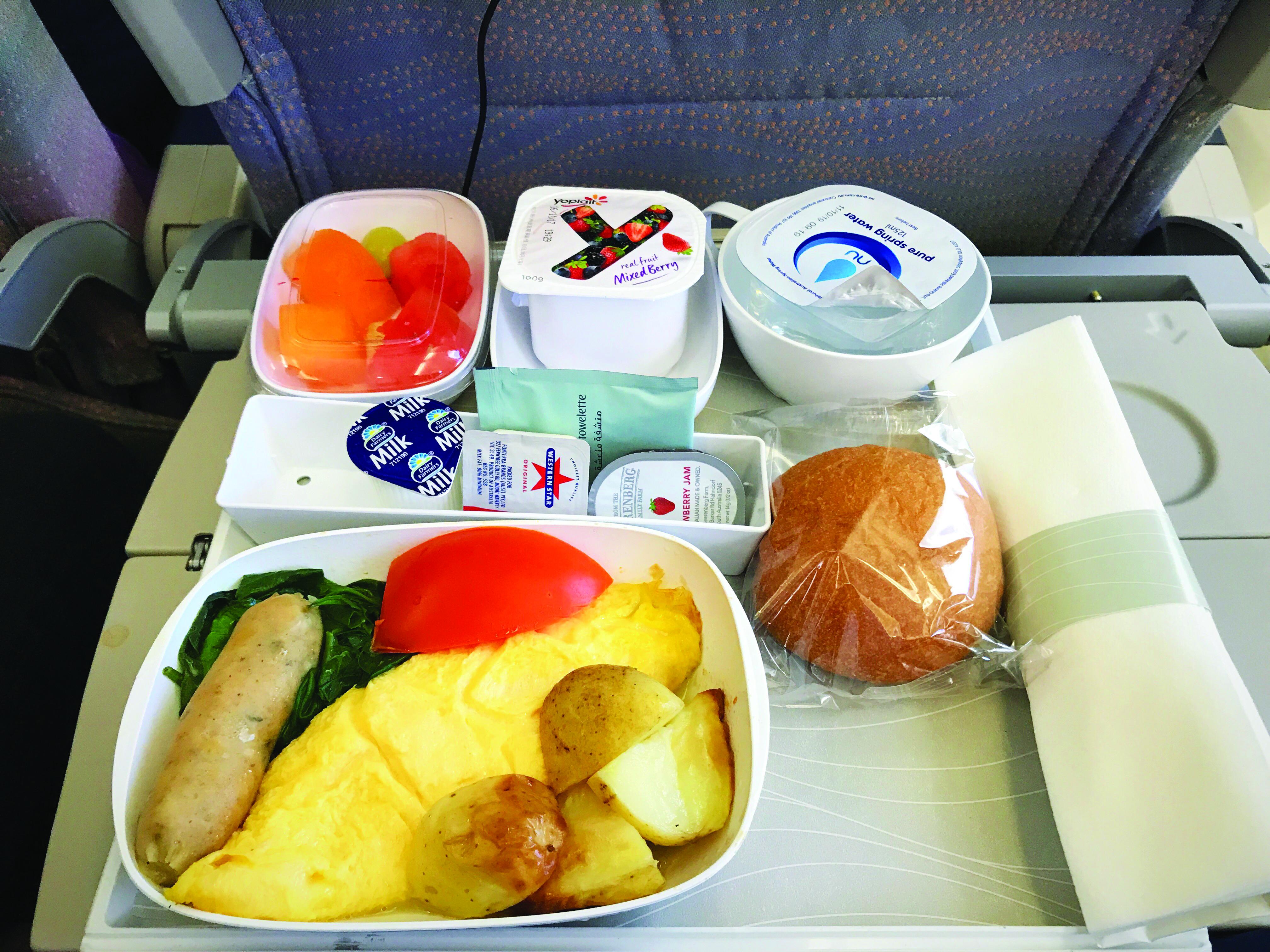
To many flying travelers, the sight of a service cart coming down the aisle is the highlight of the journey, especially if the food and beverage are free. For an increasing number of eco-conscious passengers, however, it’s another sign of waste.
Some 3.2 billion airline meals are produced every year—and that does not include retail food. But a significant amount of the food and beverages is not consumed. IATA says that 23% of cabin waste produced per flight is untouched food and drink. A pilot study at London Heathrow Airport in 2012 and 2013 indicated that a typical passenger generates 3.1 lb. (1.43kg) of cabin waste.
The other issue is that plastic is necessary for the serving of a lot of food and drinks.
Airlines and their catering companies are fully aware of the heightened environmental concerns and are moving to reduce cabin waste and minimize use of single-use plastics. But as is often the case with big issues, the solutions are not easy.
“Government rules and regulations contribute to that cabin waste,” IATA assistant director Jon Godson points out.
A major obstacle to airlines’ ability to reuse and recycle more cabin waste is the International Catering Waste legislation that many governments have adopted. This is aimed at reducing the risk of spreading animal and plant diseases, such as foot-and-mouth, and requires special treatment and disposal of all onboard food and drink products, even if they are untouched. Australia, Canada, European Union countries, New Zealand and the US have some of the strictest laws. But an IATA-commissioned study indicated the actual risk is minimal.
“We need smarter regulation and we need to develop a handbook with actions to improve cabin waste management,” Godson says.
But governments are slow to change, and their rules can be counterproductive. With the greater focus on climate change, and the relatively new “flight shame” movement, there is a tendency for stricter rules. The European Commission, for instance, is proposing a new set of directives aimed at reducing the impact of plastics and which would directly affect airlines and require all catering waste, food and equipment to be incinerated or buried in landfills.
The Airline Catering Association (ACA) supports most of the principles of those proposals but cautions against haste and a “one size fits all” piece of legislation that overlooks the lack of available sustainable alternatives.
“I am shocked by governments who have done nothing about the growing piles of plastics, but it’s easy to treat plastic as the culprit,” ACA managing director Fabio Gamba said in a briefing at IATA’s Geneva headquarters. “ACA is agnostic about the materials onboard. Nothing is black or white. The European Commission regulation is contradicting their obligations and causing confusion, which poses us with a conundrum. Why use something that is more expensive to use if you have to burn it after one use? Why change something that is working relatively well?”
Plastic benefits
Plastic, Gamba points out, has unbeatable properties when it comes to hygiene and safety, and it is lightweight—an important factor on aircraft. A few grams extra for every tray and plate multiplied by 3.2 billion meals means a lot more weight, which in aircraft terms, means more CO2 emissions.
“How do you replace the sandwich wrapper?” Gamba asks, pointing out that there are some promising solutions, but none that really work today, and there is also little in the way of leadership for setting standards on new solutions.
“We will need a lot of inventiveness to get rid of single-use plastics. Everyone is trying to find the million-dollar solution. That’s all well and good, but who is taking the lead? The EC forgot to provide a framework or the standards that we need to avoid catastrophic flops and that would mean starting all over again. We must think of the big picture and be truly sustainable. Little things may make a difference—new materials are no good if they alter the taste of food. Rough wood eating utensils are not good,” Gamba says.
The industry is not standing still. IATA supports the simplification and harmonization of cabin waste regulations and is sharing best practices across its member airlines while also developing a handbook. There’s an emphasis on getting more data and using big data so that catering companies and airlines can be more precise in delivering just the right amounts of food and beverages to each flight. The trend for offering passengers the ability to preorder their meals is helping that big data search and reducing the amount of unused food and onboard weight.
And airlines are also looking at how to better manage all the rubbish that is left in the cabins and washrooms at the end of a flight, such as newspapers, paper towels, amenity kits and plastic wrappings for blankets and headsets.
Part of the solutions should come from suppliers and airports, IATA says.
“Manufacturers need to include waste and recycling segregation as a design option included in cabin layouts. Airports need to provide recycling facilities and infrastructure that promote improved cabin waste performance, including monitoring results and sharing cost savings. Cleaning contractors can implement standard operating procedures that include the segregation of reusables and recyclables.”
And some airlines are thinking outside the box. Air New Zealand is trialing the use of edible coffee cups made by a local company called Twiice. The airline says it serves more than 8 million cups of coffee a year and the vanilla-flavored biscotti cups have been a hit with customers in its trials.
